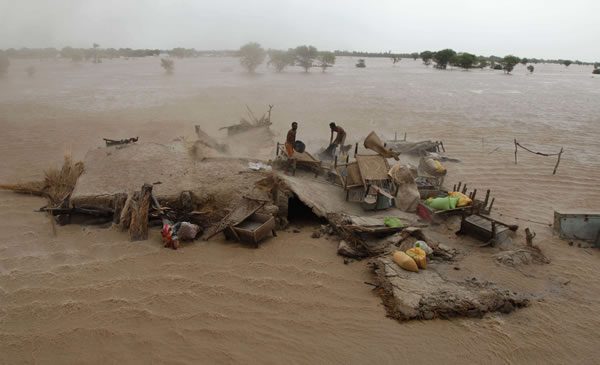Zulfiquar Ali Haider is a public health engineer working for Oxfam in flood-hit northern Pakistan. He is in Swat – one of the worst-hit areas – and this is his eyewitness account.
Day Five
Oxfam’s humanitarian director, Jane Cocking, was in Swat with me today visiting flood-affected people and seeing Oxfam’s programmes. Much of Swat is cut off and roads have been completely washed away. She said she was stunned by people’s resilience.
Flood survivors are camping on the streets of Sukkur, Sindh province We met people who had walked down from their villages. Old men, women and children had walked for two days to collect one bag of food which they were going to take back with them.
Thousands of people still have no access to fresh water and food that they desperately need. Oxfam has called this crisis a mega-disaster and it really is. There is still so much to do to get aid to those who need it.
The crisis is also countrywide. Even being here, that is hard for me to fathom. Sukkur barrage is headlining the media as the next possible place to be hit by flood water. If it happens, officials predict that many parts of the Sindh province will go under water. It is roughly 1,300km (800 miles) south of me.
I spoke to a colleague in Sindh today, he was in the city of Sukkur. He said it was tense. He saw many people stopping their cars and anxiously looking down to the Indus River to measure the increase in water level.
He said he had reached a place called Bandar Road by the riverside. There he saw many people of all ages on the streets with their belongings. They said their villages had been submerged by the floods and that they had nowhere to live apart from the city’s streets.
Monsoon season is far from over. I fear that we have not seen the worst of this disaster.
Source: BBC Online
Copyright: BBC
Read more about Oxfam’s response
Donate to our Pakistan Floods Appeal
